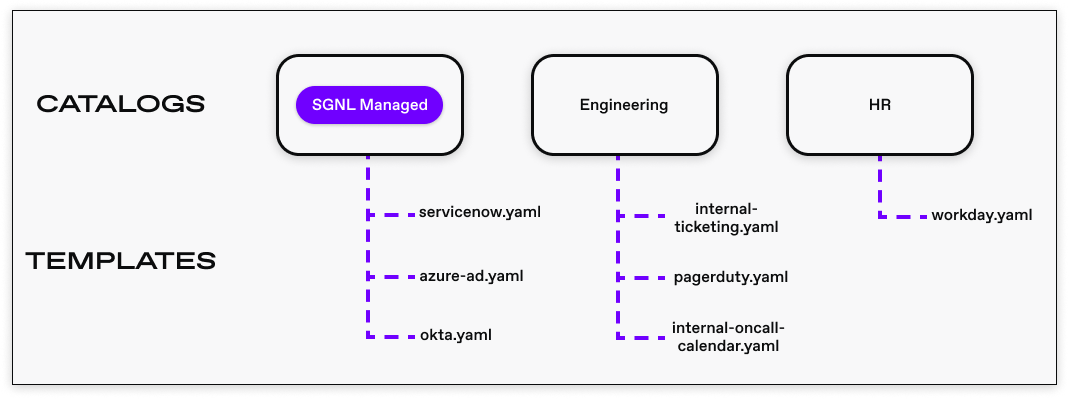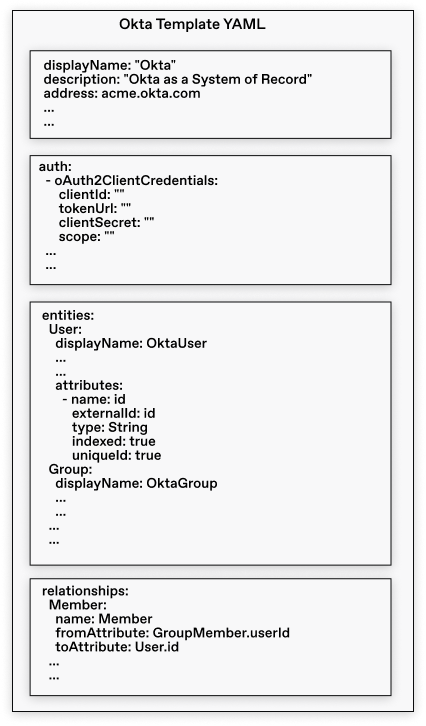
SGNL gives users total control over the creation and management of Systems of Records through Catalogs and Templates. Briefly, a catalog is a collection of template files in YAML format. Templates define Systems of Records, the supported authentication methods, entities, attributes and relationships between entities. The following diagram shows how catalogs and templates are structured:

A SGNL client comes bootstrapped with an SGNL SoR Template Catalog that contains templates for well-known public SaaS SoRs, such as Salesforce, ServiceNow, Okta, Azure Active Directory, and more. Apart from those available in the SGNL catalog, users can create their own catalogs. These can either contain forked and modified versions of the SGNL-authored templates or new ones for other Systems of Record they wish to integrate into SGNL and use for syncing data. For example, the diagram above shows the Engineering and HR departments managing distinct catalogs and templates for the Systems of Record they own.
More information on Creating and Managing Catalogs
SoR Templates allow you to define and manage your System of Record integrations with SGNL through YAML files – one per SoR. YAML is a human-readable data serialization format commonly used for configuration files. SoR templates follow a predefined structure and allow you to define metadata, authentication mechanisms, and synchronization behavior. Moreover, you can also specify entities you would like SGNL to ingest, along with their attributes, attribute types, and any relationships. The structure of templates, using Okta as an example, is shown below:

More information on Systems of Record Templates